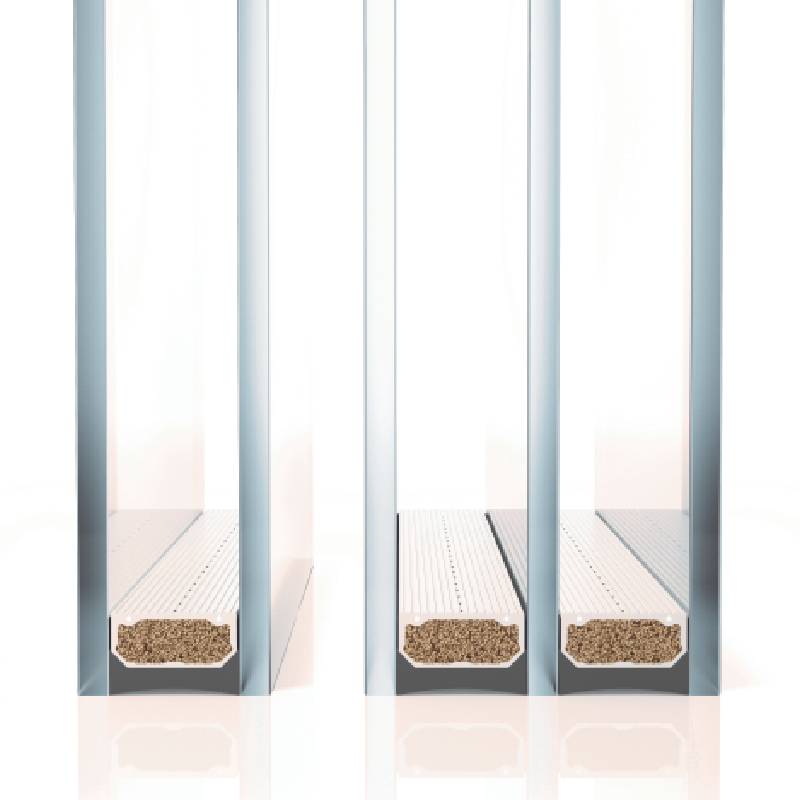

Heat Reflective Glass A Sustainable Solution for Modern Architecture
In the quest for energy efficiency and sustainability in architecture, heat reflective glass has emerged as a revolutionary material that addresses both environmental concerns and aesthetic demands. This innovative type of glass is designed to reflect a significant portion of solar energy while allowing visible light to penetrate, making it an ideal choice for both commercial and residential buildings.
Understanding Heat Reflective Glass
Heat reflective glass is typically coated with a thin layer of metallic materials, which acts as a barrier to infrared radiation. This is crucial because infrared rays contribute to heat gain in buildings, leading to increased reliance on air conditioning systems. By reflecting these rays, heat reflective glass helps maintain a comfortable indoor temperature, thus reducing energy consumption and lowering utility costs.
The technology behind heat reflective glass has advanced significantly over recent years. Modern coatings can reflect up to 70% of the sun's heat, while still allowing a high level of visible light transmission. This combination facilitates natural lighting—a key factor for any modern design—without compromising on thermal comfort.
Benefits of Heat Reflective Glass
1. Energy Efficiency One of the primary advantages of heat reflective glass is its ability to improve energy efficiency. In hot climates, the cooling load on buildings can be considerable. By incorporating this type of glass, architects can design structures that maintain cooler indoor temperatures, resulting in reduced energy costs and lower carbon footprints.
2. Comfort and Well-Being By minimizing glare and reducing heat buildup, heat reflective glass contributes to a more comfortable indoor environment. Occupants benefit from a stable temperature and improved comfort levels, which can lead to enhanced productivity in workplace settings.

3. Aesthetic Appeal Available in various forms and finishes, heat reflective glass can be seamlessly integrated into contemporary architectural designs. It can be manufactured in different colors and levels of reflectivity, allowing architects to achieve the desired visual effect for building facades.
4. Environmental Impact As awareness of climate change continues to grow, the construction industry is moving towards sustainable building practices. Using heat reflective glass not only contributes to significant energy savings but also reduces the overall environmental impact of buildings. By lowering energy consumption, buildings utilize fewer fossil fuels, thus decreasing greenhouse gas emissions.
5. Durability and Maintenance Heat reflective glass is usually treated to enhance its durability, making it resistant to scratches and harsh weather conditions. This resilience, coupled with its reflective qualities, ensures that buildings maintain their aesthetic appeal over time with minimal maintenance requirements.
Applications in Modern Architecture
Heat reflective glass finds applications in various architectural settings, from skyscrapers to residential homes. In commercial buildings, expansive glass facades can create visually striking exteriors while controlling heat gain. In contrast, residential applications often focus on maximizing comfort and energy efficiency, allowing homeowners to harness natural light without sacrificing temperature control.
Furthermore, green building certifications—such as LEED—often emphasize the importance of energy-efficient materials, making heat reflective glass an attractive choice for developers and builders aiming to meet stringent environmental standards.
Conclusion
As the world continues to prioritize sustainability, heat reflective glass stands out as a significant innovation in the construction industry. Combining energy efficiency, aesthetic versatility, and environmental benefits, this material is not just a trend but a vital component of modern architectural practices. Embracing heat reflective glass can lead to substantial long-term savings, improved comfort, and a reduced ecological footprint, making it an essential choice for the buildings of the future.